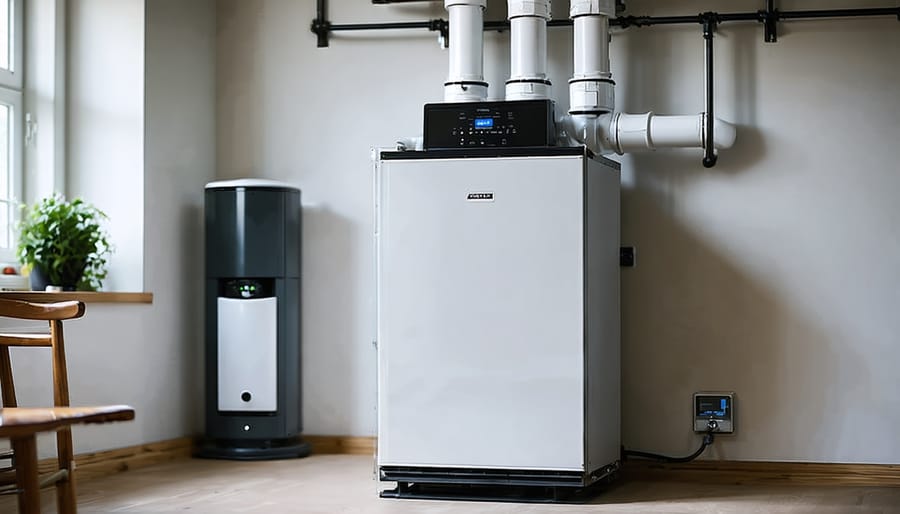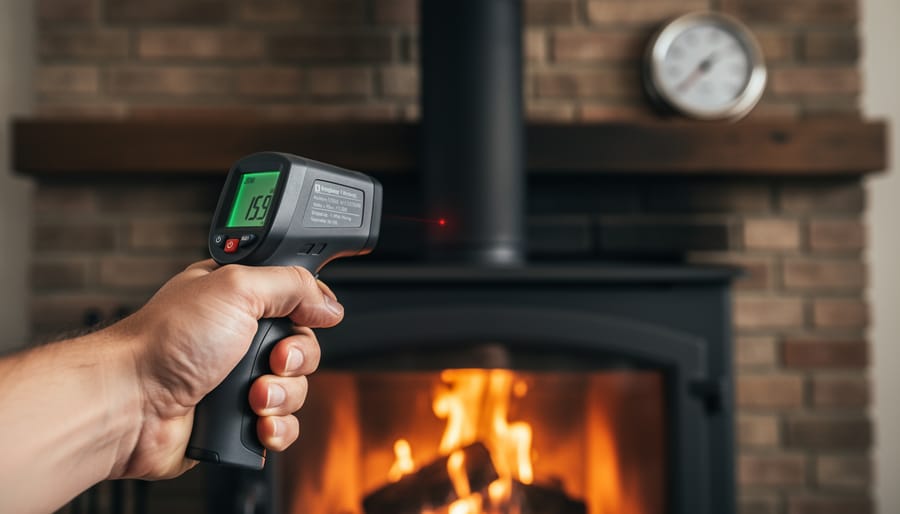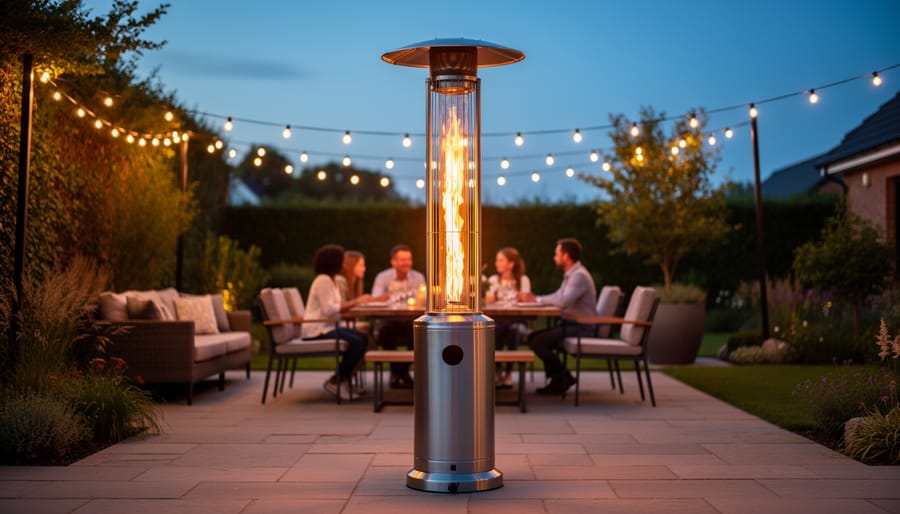Upgrading to a 96% efficiency gas furnace means your heating system converts nearly every dollar of fuel into usable warmth for your home, wasting only 4 cents per dollar on exhaust—a dramatic improvement over older furnaces that squander 20-40% of their fuel. These ultra-efficient models, officially called condensing furnaces, capture heat from exhaust gases that standard furnaces send up the chimney, transforming that wasted energy into additional comfort while significantly reducing your carbon footprint and monthly utility bills.
The technology behind 96% AFUE (Annual Fuel Utilization Efficiency) furnaces uses a secondary heat exchanger to extract warmth from water vapor in combustion gases, causing condensation—hence the name. This process requires special venting materials, typically PVC pipes that can handle acidic condensate, and often demands modifications to your existing infrastructure. When converting from oil, propane, or electric heating to high-efficiency gas, you’re not simply swapping equipment; you’re investing in a complete heating transformation that delivers 30-50% energy savings compared to older systems.
The critical question isn’t whether these furnaces work—they excel at heating efficiently—but whether the $3,000-$7,000 premium over standard 80% models makes financial sense for your home. Understanding the break-even point, your regional climate, fuel costs, and planned homeownership duration determines whether this eco-friendly heating solution delivers genuine value or represents unnecessary expense. Making this decision requires examining your specific situation through both environmental and economic lenses.
What Makes a 96% Efficiency Gas Furnace Different
The Condensing Process Explained Simply
Think of a 96% efficiency gas furnace like wringing every last drop of warmth from a wet towel—except here, we’re capturing heat from water vapor that standard furnaces simply exhaust outside.
Here’s what happens: when natural gas burns, it creates heat and water vapor. Traditional furnaces send those exhaust gases straight up the chimney at around 300-400°F, wasting all that potential warmth. A condensing furnace, however, includes a second heat exchanger that cools those exhaust gases below 130°F, causing the water vapor to condense into liquid. This condensation process releases hidden heat energy—the same principle behind why steam burns are so serious.
By capturing this “bonus” heat that would otherwise escape, these furnaces extract 96 cents of usable warmth from every dollar of fuel, compared to just 80 cents in older models. It’s an eco-friendly heating solution that reduces both your carbon footprint and heating bills simultaneously. The result? Your home stays cozy while using significantly less fuel—a win for both comfort and environmental responsibility.
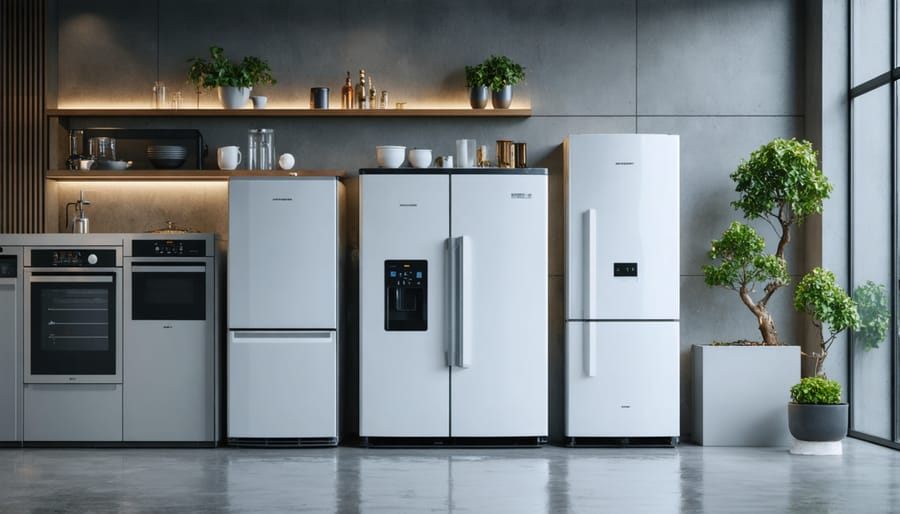
Key Components That Drive Up the Cost
So what exactly makes a 96% efficiency gas furnace more expensive than standard models? Three key components account for most of the price difference, and understanding them helps you appreciate where your investment goes.
The **secondary heat exchanger** is the star player here. While standard furnaces capture heat once, high-efficiency models squeeze even more warmth from the combustion gases through this additional exchanger. Think of it as getting a second helping of heat that would otherwise escape up the chimney—it’s this extra step that pushes efficiency into the 90s.
Next is the **sealed combustion system**, which draws air directly from outside rather than using heated air from your home. This design keeps your living space comfortable while ensuring the furnace operates safely and efficiently. It’s a smarter approach that protects both your indoor air quality and your heating investment.
Finally, **PVC venting** replaces traditional metal chimneys. Because these furnaces extract so much heat, exhaust gases cool down enough to safely exit through less expensive plastic pipes. This also means more flexible installation options and lower venting costs, though the overall system still represents a significant technological upgrade that contributes to the higher initial price tag.
When Fuel Conversion Makes 96% Efficiency a Smart Move
Converting from Oil or Propane
If you’re currently heating with oil or propane, upgrading to a 96% efficiency natural gas furnace can deliver exceptional savings that make the investment incredibly worthwhile. The combination of switching to typically less expensive natural gas plus gaining that premium efficiency creates a powerful one-two punch for your heating budget.
Many homeowners in regions where heating oil or propane costs significantly more than natural gas see payback periods of just three to five years—sometimes even faster. The propane and natural gas price difference alone might cut your heating costs by 30-50%, and when you layer a high-efficiency furnace on top of that, the savings compound beautifully.
The fuel conversion process does add upfront costs, including running new gas lines if needed, but many utility companies offer conversion incentives that help offset these expenses. You’ll also eliminate the hassle of monitoring tank levels and scheduling deliveries—natural gas simply flows to your home continuously.
From an eco-friendly perspective, this switch reduces your carbon footprint substantially while creating a more sustainable heating solution for your home. It’s an investment that pays dividends in comfort, convenience, and environmental responsibility for years to come.
Electric to Gas Conversion Considerations
Converting from electric to gas heating presents an excellent opportunity to embrace high-efficiency technology, but it’s not the right choice for every home. The decision hinges primarily on your local utility rates and climate conditions.
In regions where natural gas costs significantly less than electricity—typically areas with abundant gas infrastructure—pairing your conversion with a 96% efficiency furnace makes tremendous financial sense. You’ll benefit from both lower fuel costs and minimal waste. Cold-climate homeowners see the most dramatic savings, as their heating systems run frequently throughout winter months.
However, if you live in a mild climate zone where heating demands are modest, or if gas or electric heating costs are comparable in your area, the premium for 96% efficiency may take longer to recoup through energy savings.
Before making the switch, request detailed quotes that include gas line installation, necessary venting modifications for condensing technology, and proper sizing calculations. Many homeowners discover that investing in top-tier efficiency during conversion—rather than upgrading later—provides the best long-term value while supporting eco-friendly heating goals.
Contact your utility provider for rate comparisons and potential rebates that can offset conversion costs, making high-efficiency equipment more accessible.
The Real Cost of Upgrading: Installation and Infrastructure
Venting Requirements and Costs
One of the most significant differences with 96% efficiency furnaces is their unique venting requirements. Unlike standard furnaces that exhaust hot gases through traditional metal flues, these high-efficiency models produce exhaust so cool that it can be vented through PVC pipes. This happens because the furnace extracts nearly all the heat from combustion, leaving behind condensate—hence why they’re called “condensing furnaces.”
This modern venting approach offers both advantages and considerations for your home. The good news? PVC venting is generally less expensive than traditional metal flue pipes and offers more flexible installation options, including the possibility of venting through a sidewall rather than your roof. This can be especially helpful if your existing chimney needs repair or if you’re converting from oil to gas.
However, installation costs can vary significantly depending on your home’s layout. If you’re replacing an older furnace, you may need entirely new venting installed, which typically adds $500 to $1,500 to your project. Homes without existing venting paths might see costs reach $2,000 or more. The investment supports both your comfort and environmental responsibility, as these eco-friendly heating solutions minimize waste heat while keeping your home cozy and warm throughout the coldest months.
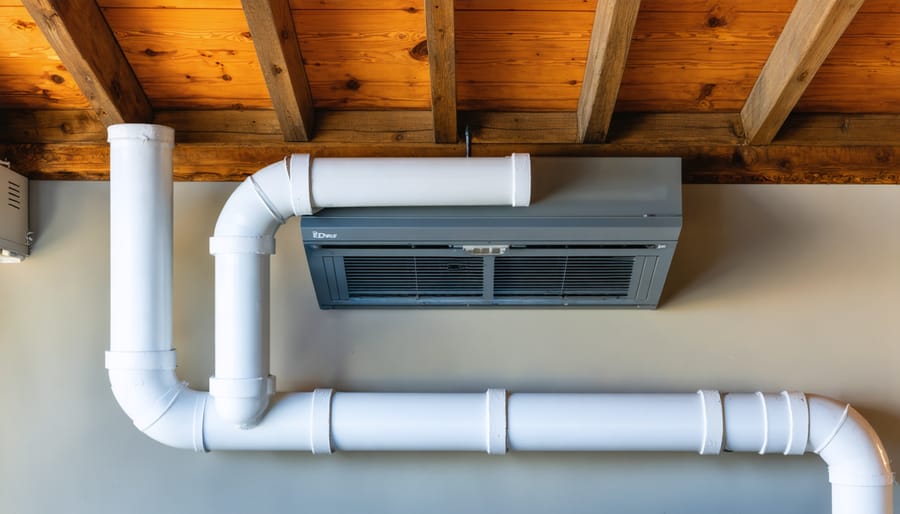
Gas Line Sizing and Modifications
When upgrading to a 96% efficiency furnace during fuel conversion, your existing gas line may need modifications to handle the increased fuel demands. High-efficiency furnaces often require larger diameter pipes or higher gas pressure than older models, especially if you’re converting from oil or propane to natural gas.
A qualified HVAC technician will assess your current gas line’s capacity, measuring both pipe diameter and the distance from your meter to the furnace location. In many homes, the existing half-inch line won’t provide adequate flow for a high-efficiency unit, necessitating an upgrade to three-quarter-inch or even one-inch piping. This is particularly common in homes where the furnace sits far from the gas meter or if you’re adding capacity to support other gas appliances.
Expect gas line modifications to add $500 to $2,000 to your conversion project, depending on the run length and complexity of the installation. While this might seem like an unexpected expense, proper sizing ensures your new eco-friendly heating system operates safely and maintains peak efficiency. Your contractor should obtain necessary permits and have work inspected by local authorities—this protects both your investment and your family’s safety while ensuring compliance with current building codes.
Running the Numbers: Your Payback Timeline
Factors That Speed Up Your Return
A 96% efficiency gas furnace delivers its biggest financial advantages under specific circumstances. If you live in a region with harsh, extended winters—think northern climates where your furnace runs steadily from November through March—you’ll recoup your investment much faster. The greater your heating demand, the more those efficiency gains translate into real savings on your monthly bills.
Home size matters considerably too. Larger homes requiring more heating energy will see accelerated payback periods compared to compact spaces. Similarly, if you’re in an area where natural gas prices run high, every percentage point of efficiency improvement puts more money back in your pocket each season.
The conversion scenario itself creates opportunities for faster returns. When switching from expensive heating oil or propane to natural gas while simultaneously upgrading to a high-efficiency model, you’re capturing savings from both fuel type considerations and improved technology. This double benefit often makes the premium investment worthwhile much sooner than expected.
Finally, if you’re replacing an aging, inefficient furnace—especially one operating below 70% efficiency—the performance gap is so dramatic that your new 96% unit can practically pay for itself through reduced fuel consumption within just a few years, making it both an eco-friendly heating solution and a smart financial decision.
When Standard Efficiency Might Be Smarter
Let’s be honest—a 96% efficiency furnace isn’t always the smartest investment for every home. If you live in a milder climate where your heating season is relatively short, you may never recoup the additional upfront cost through energy savings. The same applies to smaller homes that simply don’t consume enough fuel to generate meaningful savings, even with superior efficiency.
Budget constraints matter too. If choosing a high-efficiency model means compromising on proper installation, adequate ductwork modifications, or necessary ventilation upgrades, you’re better off investing in a quality standard-efficiency unit (80-85% AFUE) that’s installed correctly. A properly sized and installed 80% furnace will outperform a poorly installed 96% model every time.
Consider your timeline as well. If you’re planning to move within five years, you likely won’t stay in the home long enough to see a return on investment. Additionally, if your existing venting system is in excellent condition and compatible with standard efficiency models, retrofitting for condensing technology adds considerable expense that might not make financial sense.
Sometimes the practical choice beats the optimal one on paper. There’s no shame in choosing a reliable, well-installed standard-efficiency furnace that fits your budget and heating needs—it’s still a significant upgrade if you’re converting from an older system.
The Eco-Friendly Heating Advantage
Lower Emissions and Carbon Footprint
A 96% efficiency gas furnace dramatically reduces your home’s environmental impact compared to older models. For every dollar of natural gas you burn, only four cents worth of heat escapes through the vent—meaning 96 cents goes directly into warming your home. This efficiency translates to burning approximately 30-40% less fuel annually than a standard 80% AFUE furnace.
In practical terms, upgrading could prevent roughly 1.5 tons of carbon dioxide emissions per year in an average-sized home. That’s equivalent to planting about 35 trees or taking a car off the road for two months. When comparing gas versus electric systems, high-efficiency gas furnaces offer significant emission reductions while maintaining the cozy, consistent warmth homeowners value.
Beyond the numbers, choosing a 96% efficient model demonstrates your commitment to responsible heating without sacrificing comfort—a meaningful step toward creating a more sustainable home environment for your family and community.
Pairing with Smart Home Technology
Modern 96% efficiency gas furnaces become even smarter when paired with today’s home technology. By connecting your high-efficiency furnace with a smart thermostat, you’re creating a heating system that learns your schedule and adjusts temperatures automatically—maximizing both comfort and energy savings. These intelligent devices can lower temperatures when you’re away and warm your home just before you return, ensuring your investment in efficiency works harder for you.
Zoning systems take this concept further by dividing your home into separate heating areas. Instead of heating unused rooms to the same temperature as your living spaces, you can customize comfort levels throughout your house. This pairs beautifully with the eco-friendly nature of high-efficiency furnaces, reducing fuel consumption even more.
The real beauty? These technologies work seamlessly together, creating a sustainable heating ecosystem that respects both your budget and the environment. You’ll monitor energy usage from your smartphone, adjust settings remotely, and receive maintenance reminders—all while enjoying consistent warmth throughout your home.
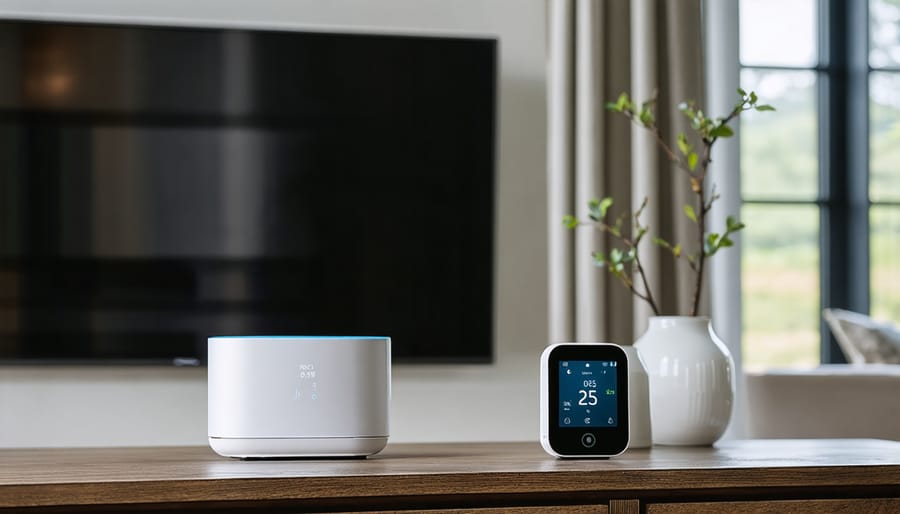
Maintenance and Longevity: What You Need to Know
Condensate Drainage and Winter Care
High-efficiency gas furnaces produce a byproduct that standard models don’t: condensate water. As your 96% AFUE furnace extracts maximum heat from combustion gases, it cools them below their dew point, creating moisture that must drain away properly. This eco-friendly process recovers energy that would otherwise escape through your chimney, but it requires attention, especially in colder climates.
Your condensate drain line needs regular maintenance to prevent clogs from algae, dust, or mineral buildup. More importantly, if this line runs through unheated spaces or exits outside your home, it can freeze during winter, causing water backup and potentially shutting down your furnace. Many homeowners prevent freezing by installing drain line insulation, heat tape, or routing the line through interior walls. Some systems include condensate pumps that move water more efficiently to interior drains.
During your annual furnace inspection, your technician should check the condensate trap and drain line. This simple maintenance step ensures your high-efficiency system keeps your home warm and comfortable all winter long.
Expected Lifespan and Warranty Coverage
When you invest in a 96% efficiency gas furnace, you’re choosing a heating system built to serve your home for the long haul. These high-efficiency units typically last between 15 to 20 years with proper maintenance—comparable to standard furnaces but with significantly lower operating costs throughout their lifespan. This longevity makes them an especially smart choice if you’re converting fuel types and planning to stay in your home.
Most manufacturers back these premium furnaces with comprehensive warranties that typically include 10 years on the heat exchanger (the heart of your system) and 5 to 10 years on parts. Some brands even offer limited lifetime warranties on certain components. However, warranty coverage often requires professional installation and annual maintenance—small investments that protect your heating system and ensure it continues running efficiently. Since these eco-friendly furnaces represent a significant upfront cost, understanding your warranty protection helps you make a confident, informed decision about upgrading your home’s comfort system.
Choosing a 96% efficiency gas furnace is a personal decision that depends on your home, budget, and long-term heating goals. While these high-efficiency models aren’t the perfect fit for every situation, they shine brightest during fuel conversion projects where you’re already investing in new infrastructure. The combination of lower fuel costs, reduced environmental impact, and enhanced comfort makes them particularly appealing for homeowners committed to sustainable heating solutions.
Before making your final decision, consult with qualified HVAC professionals who can assess your specific circumstances—your home’s size, insulation quality, local climate, and existing ductwork. They’ll help you understand whether the premium cost translates into genuine value for your household. Remember, the most efficient furnace is one that matches your needs while creating the warm, comfortable home environment you deserve. Take time to gather multiple quotes, ask detailed questions, and choose a solution that aligns with both your immediate comfort and long-term energy goals.

